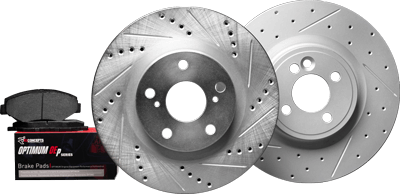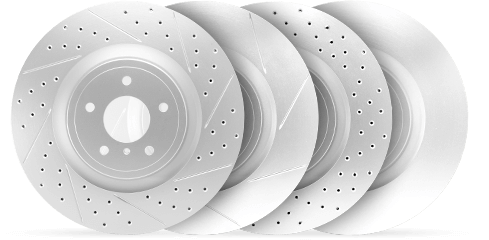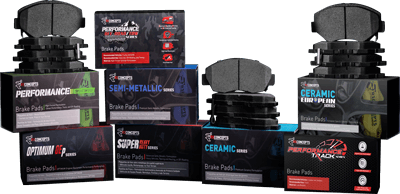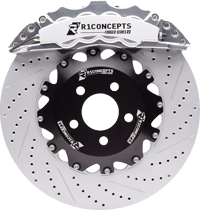Are you concerned about your vehicle’s braking performance? Deciding between drilled and slotted rotors can be a complex and confusing task. Fret not, as we unravel the mystery behind the question, “are drilled and slotted rotors better?” We will guide you through the process of making the right choice for your vehicle. Get ready to embark on a journey that will help you understand the design, benefits, applications, and maintenance of drilled and slotted rotors.
Short Summary
Drilled and slotted rotors offer improved braking performance, heat dissipation, wear reduction and noise reduction.
High quality drilled/slotted rotors are necessary to avoid the risk of cracking. Regular cleaning & inspection is important for maintenance.
Expert recommendations & user experiences should be considered when selecting rotor type for a vehicle.
Understanding Drilled and Slotted Rotors
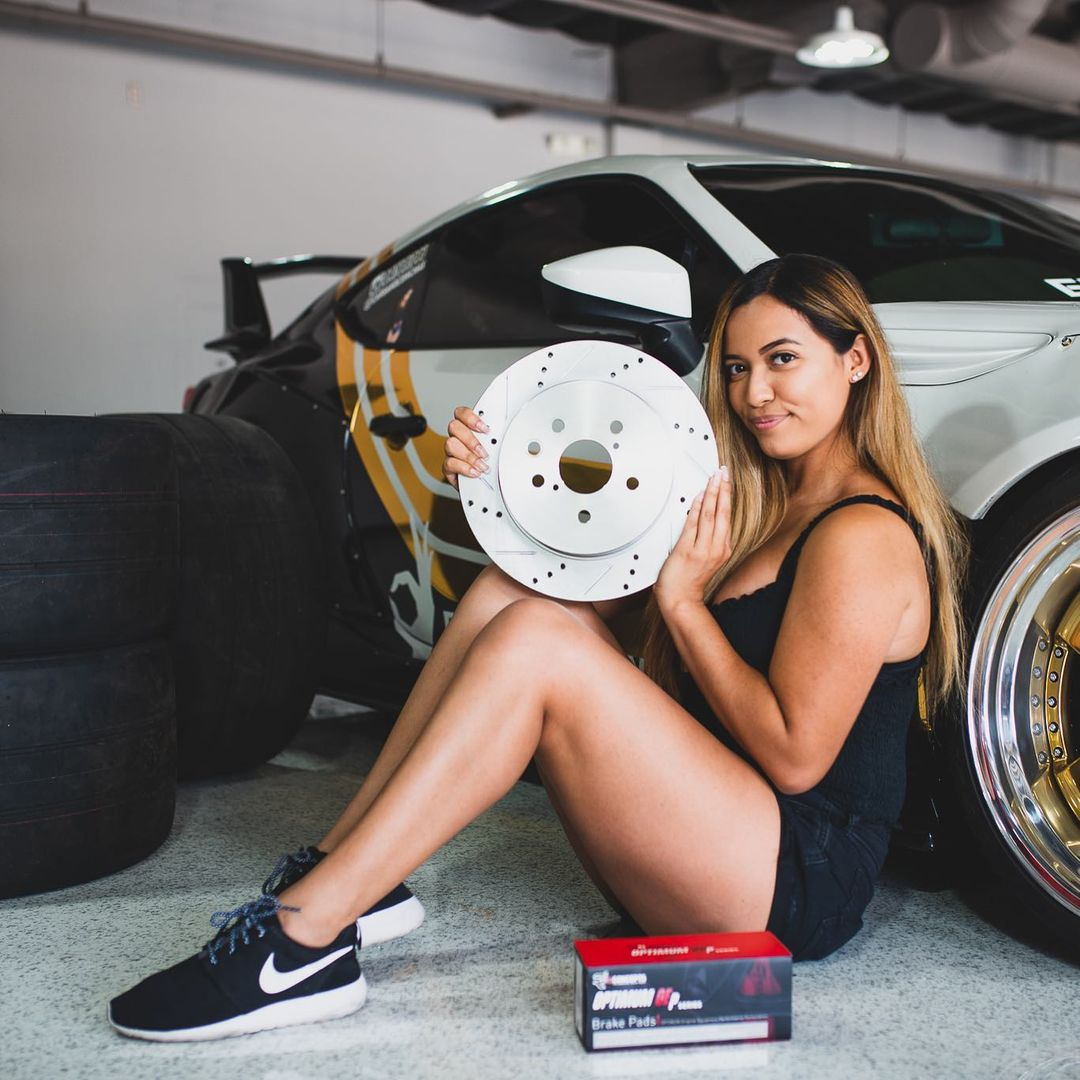
When it comes to enhancing your vehicle’s braking performance, slotted and drilled rotors, as well as drilled and slotted rotors, are two popular options that offer a range of benefits. Drilled rotors have holes drilled completely through the rotor surface, whereas slotted rotors have slots machined into them in a spiral pattern. Both designs provide unique advantages that cater to different driving conditions and vehicle types.
Let’s dive deeper into the world of drilled and slotted rotors to discover their design intricacies and performance benefits.
Drilled Rotors: Design and Benefits
Drilled rotors are engineered with holes drilled completely through the rotor from the front to the back. These strategically placed holes offer several advantages, including:
Maintaining cleanliness of the pad and drilled rotor surfaces
Increased brake bite
Improved performance in wet conditions
Significantly enhanced heat dissipation by permitting air to circulate through the veins, thus decreasing brake temperature.
However, it’s not all sunshine and rainbows in the world of drilled rotors. These rotors may be vulnerable to the formation of micro-fractures and cracking after successive heat cycles, extended braking, and aggressive driving. To mitigate this risk, investing in high-quality drilled rotors is highly recommended, albeit at a higher cost.
Slotted Rotors: Design and Benefits
On the other hand, slotted rotors feature slots machined in a spiral pattern on their surface. These grooves are designed to reduce the build-up of dust and gases at the contact point between the pads and rotor, as well as to expose fresh, grippy material on the pads’ surface. Slotted rotors offer improved braking performance and extended brake pad life.
Moreover, slotted rotors help maintain rotor surface temperature as the pads experience wear from normal driving. In wet weather conditions, the slots etched in the rotors help keep the rotors and brake pads dry, thus reducing the vehicle’s wet braking distance.
Comparing Drilled and Slotted Rotors
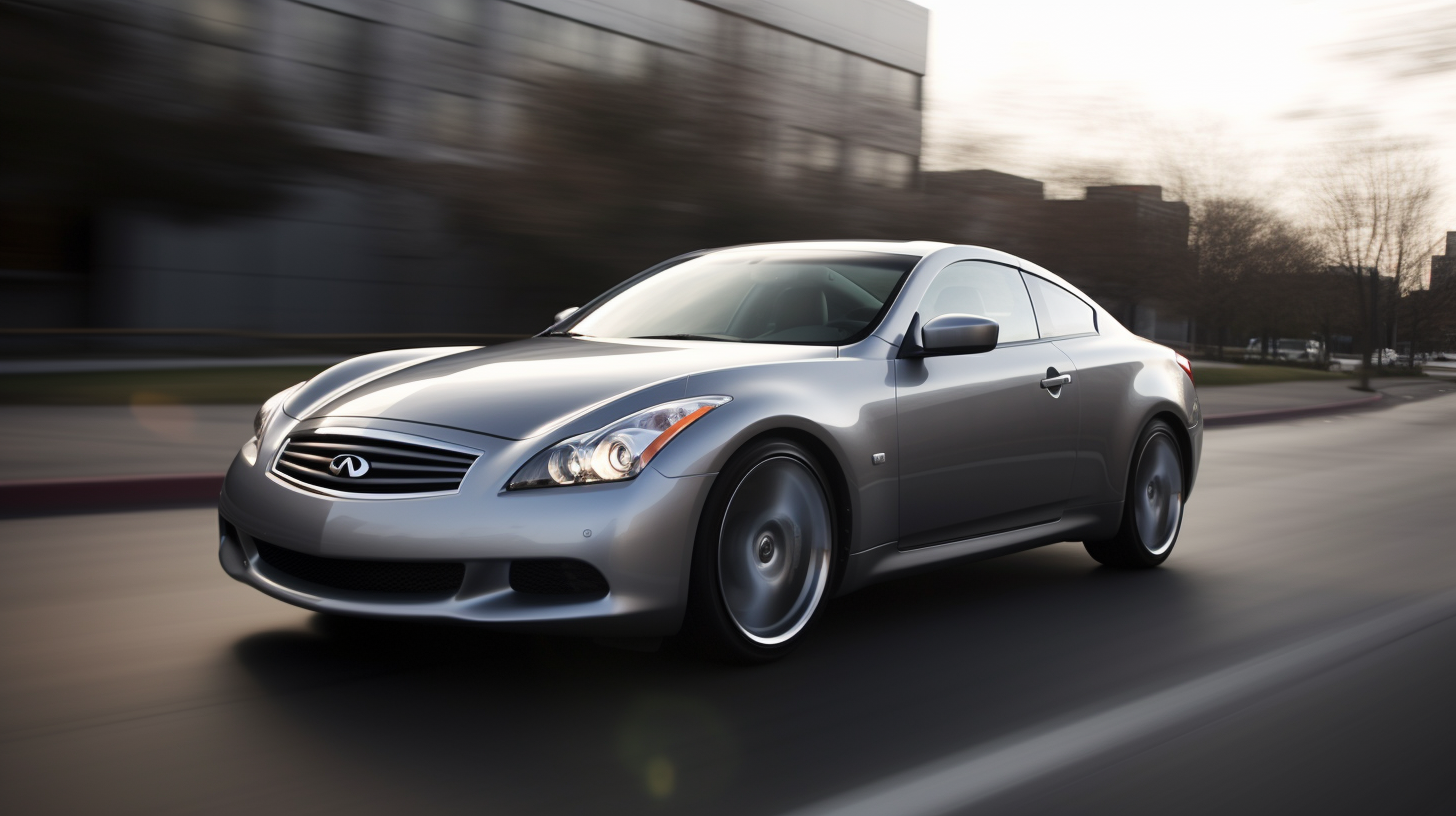
Now that we’ve explored the design and benefits of drilled and slotted rotors, it’s time to compare their performance aspects. Both types of rotors offer improved braking performance in different conditions; drilled rotors maintain the pad and rotor surfaces clean and clear of debris, while slotted rotors are more effective at heat dissipation and reducing brake fade.
To further understand their distinct advantages, let’s delve into the specifics of heat dissipation, wear, and noise.
Heat Dissipation and Brake Fade
Both drilled and slotted rotors provide improved heat dissipation compared to standard rotors. The increased surface area in their designs facilitates faster dissipation of heat, thereby cooling the brake system at a more rapid rate.
Enhanced heat dissipation and diminished brake fade can provide superior braking performance, resulting in heightened safety.
Pad and Rotor Wear
Drilled and slotted rotors may result in increased brake pad wear due to the additional friction caused by the drilled holes and slots. Drilled rotors may wear faster due to jagged edges, while slotted rotors can cause faster pad wear.
However, high-quality brands can help reduce the pad and rotor wear caused by drilled and slotted rotors.
Noise and Vibration
Noise and vibration levels may vary between drilled and slotted rotors, depending on the design and quality. Drilled and slotted rotors generally produce more noise than regular rotors due to their design, which can be described as a rumbling, clicking, or humming sound.
However, these sounds are expected and should not be a source of worry.
Ideal Applications for Drilled and Slotted Rotors
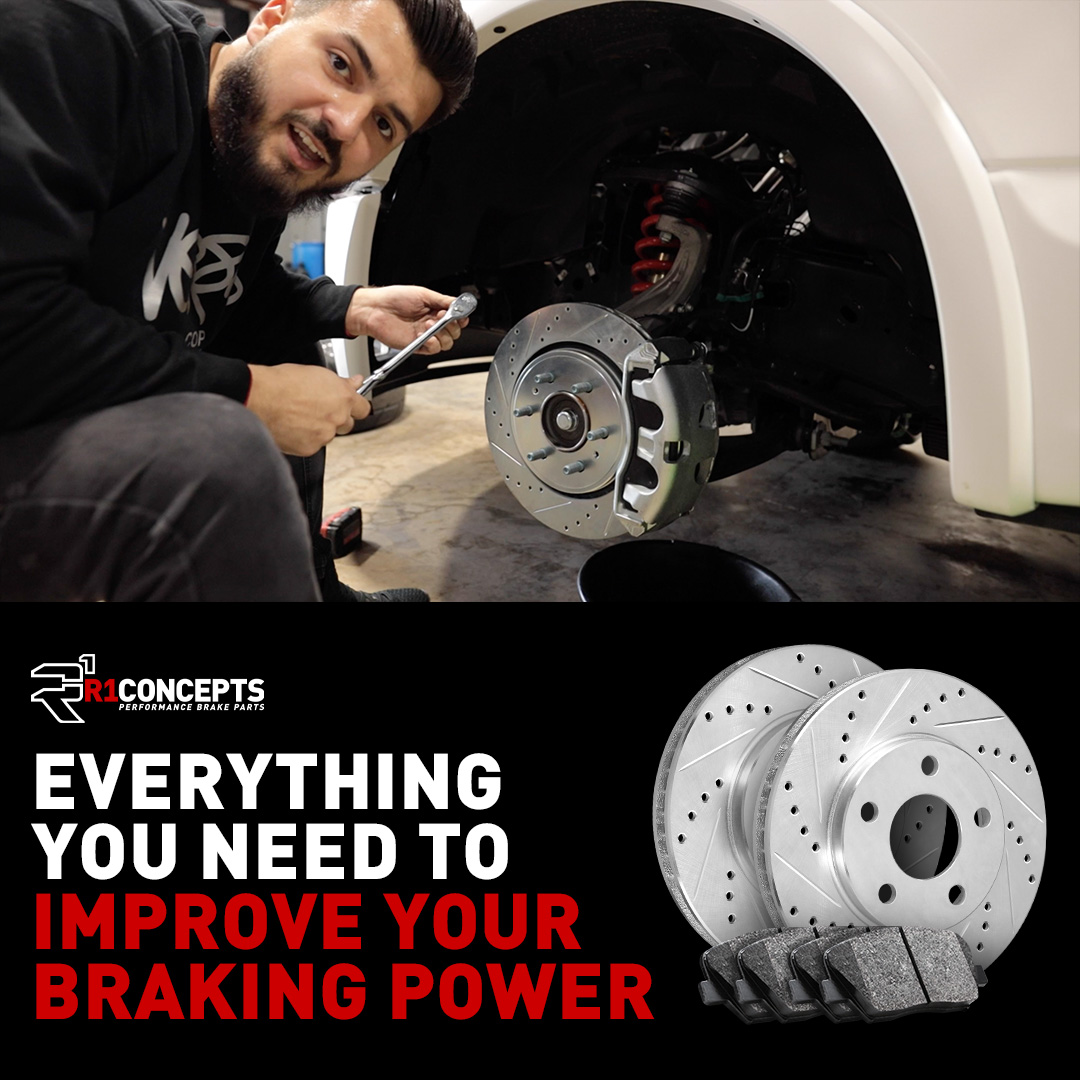
Different types of vehicles and driving habits call for different rotor types. Drilled rotors are suitable for heavy-duty applications, such as tow vehicles and trucks carrying heavy loads, as they maintain cooler operating temperatures and provide better braking performance in wet conditions.
Slotted rotors, on the other hand, are recommended for improved braking performance and longer brake pad life. Let’s explore the ideal applications for drilled and slotted rotors based on vehicle type and driving habits.
Daily Drivers
For daily drivers, vented rotors are the recommended choice. These rotors provide better cooling efficiency and increased resistance to fading compared to solid rotors. While drilled and slotted rotors may provide improved cooling and extended brake pad life, they may not be necessary for daily driving unless the vehicle is subject to heavy loads or experiences warping rotors.
For vehicles that are subject to heavy loads or experience warping rotors, drilled and slatted.
Performance Cars
Drilled or slotted rotors can provide tremendous benefits for performance cars. They help to improve vehicle’s performance significantly. These rotors are designed to maximize braking performance and reduce brake fade, ensuring that your high-performance vehicle can stop quickly and safely.
Drilled rotors provide enhanced braking performance in a variety of circumstances, including towing and racing, while slotted rotors offer improved braking performance and extended brake pad life.
Towing and Heavy-Duty Vehicles
Towing and heavy-duty vehicles require improved heat management and braking performance, which can be provided by drilled and slotted rotors. Drilled rotors are suitable for heavy-duty vehicles, such as tow vehicles and trucks that carry heavy loads, as they keep cooler operating temperatures and provide improved braking performance in wet conditions.
Slotted rotors, on the other hand, are ideal for managing regular heat and cool cycles, offering improved braking performance and reduced brake fade.
Cost and Quality Considerations
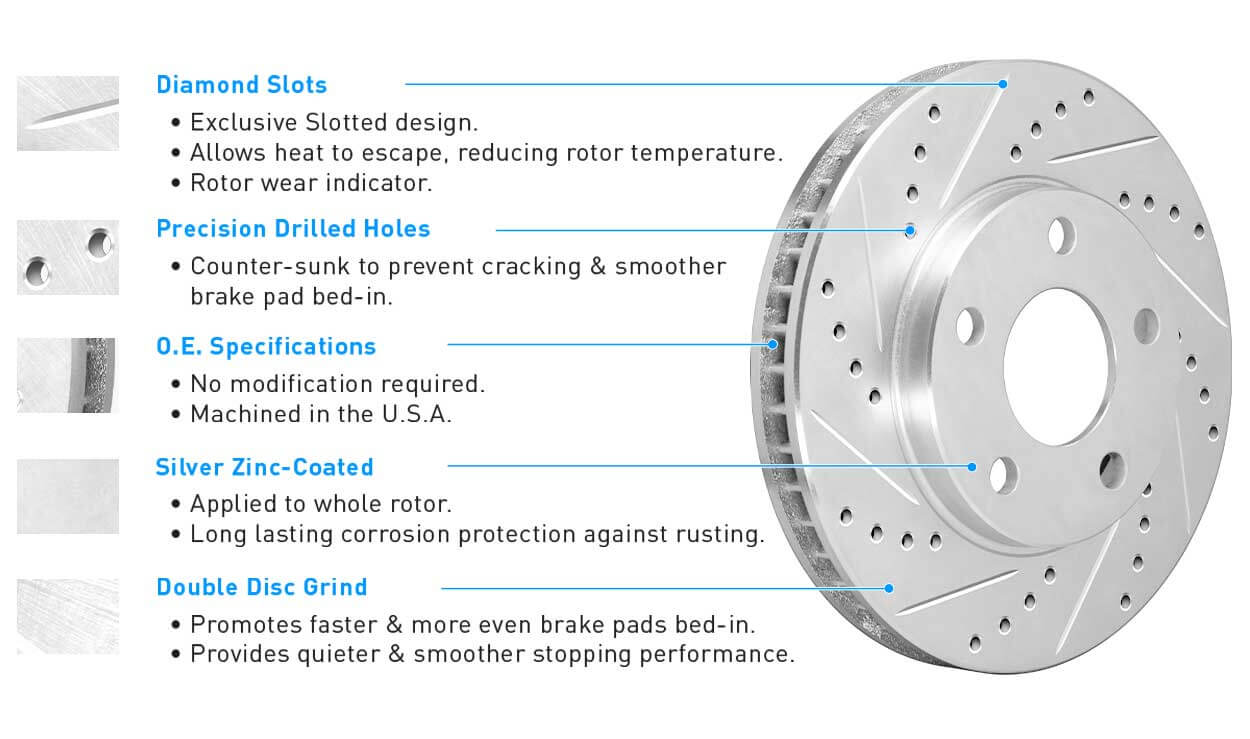
Before making a decision, it’s essential to evaluate the cost and quality of drilled and slotted rotors. Factors such as the brand, material, and size can influence the price, while the manufacturer’s reputation, materials used, and the quality of construction can impact the performance and durability of the rotors.
Let’s delve deeper into the cost and quality factors to ensure you make a well-informed decision.
Price Comparison
Drilled and slotted rotors are generally more expensive than solid rotors, with prices ranging from $50 to $200 per rotor. However, the improved performance and lifespan offered by these rotors can justify the additional cost.
It’s important to consider your vehicle’s specific needs and whether the benefits of drilled and slotted rotors outweigh the price difference.
Brand and Material Quality
High-quality brands and materials play a crucial role in avoiding issues with wear and performance, ensuring a worthwhile investment in drilled and slotted rotors. That’s why R1 concepts always invests in high quality material for our rotors.
The quality of the materials used in the brake rotor can help ensure they are resilient and can withstand the heat generated by braking, contributing to smooth rotors performance.
Expert Recommendations and User Experiences
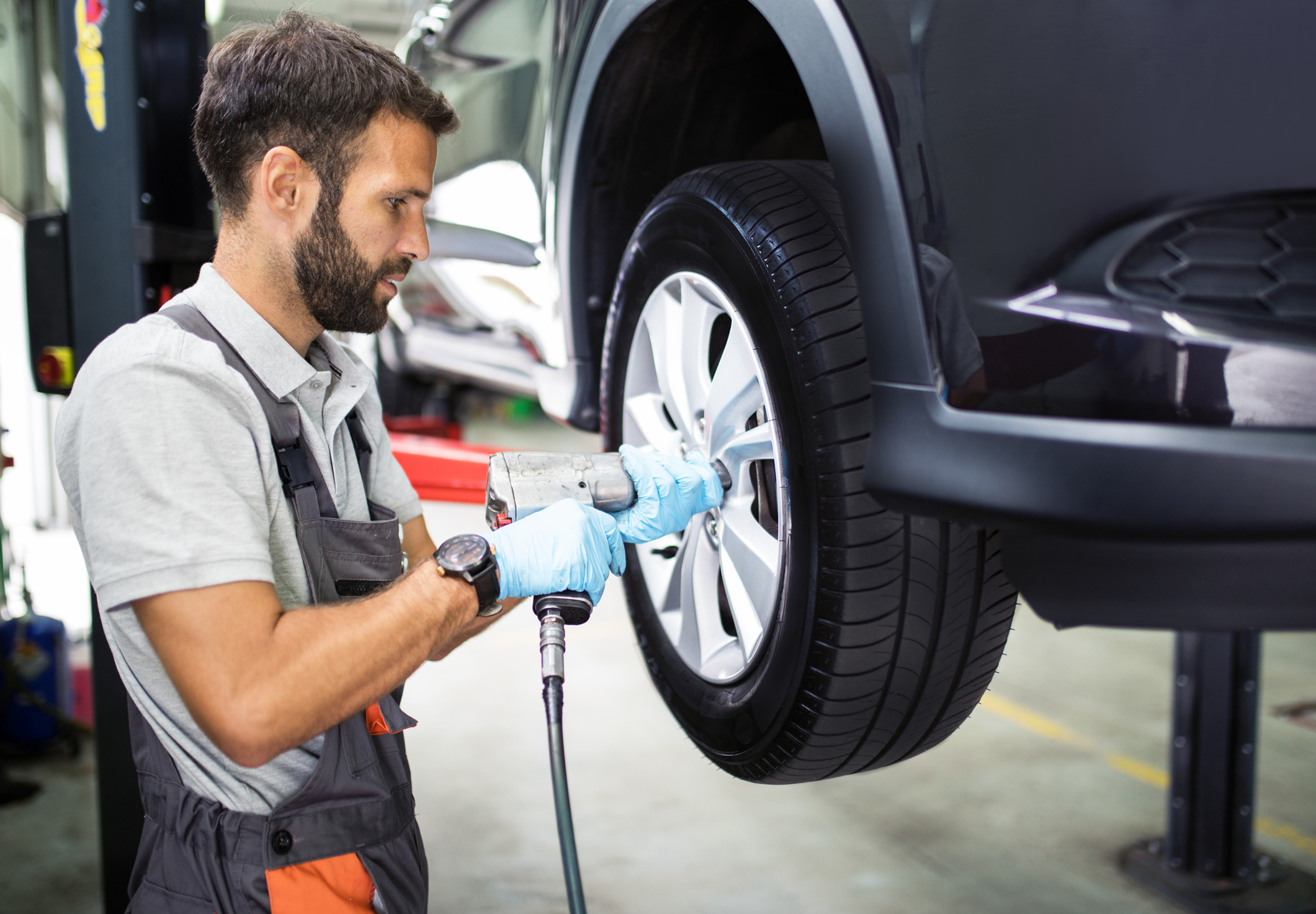
To make an informed decision on whether to choose drilled or slotted rotors, it’s essential to gather expert recommendations and user experiences. Different sources provide varying opinions on the ideal rotor type for specific applications and vehicle types.
Let’s take a closer look at the advice and testimonials from professionals and drivers who have firsthand experience with drilled and slotted rotors.
Professional Mechanics’ Advice
Consulting with professional mechanics can provide valuable guidance on choosing the right rotor type for your vehicle and driving habits. They caution that drilled rotors may not be the most suitable option for race cars due to their susceptibility to repeated heat and cool cycles, but can be reconditioned to improve performance and durability.
On the other hand, slotted rotors are an ideal selection for race cars, as they can effectively manage regular heat and cool cycles, offering improved braking performance and reduced brake fade.
Drivers’ Testimonials
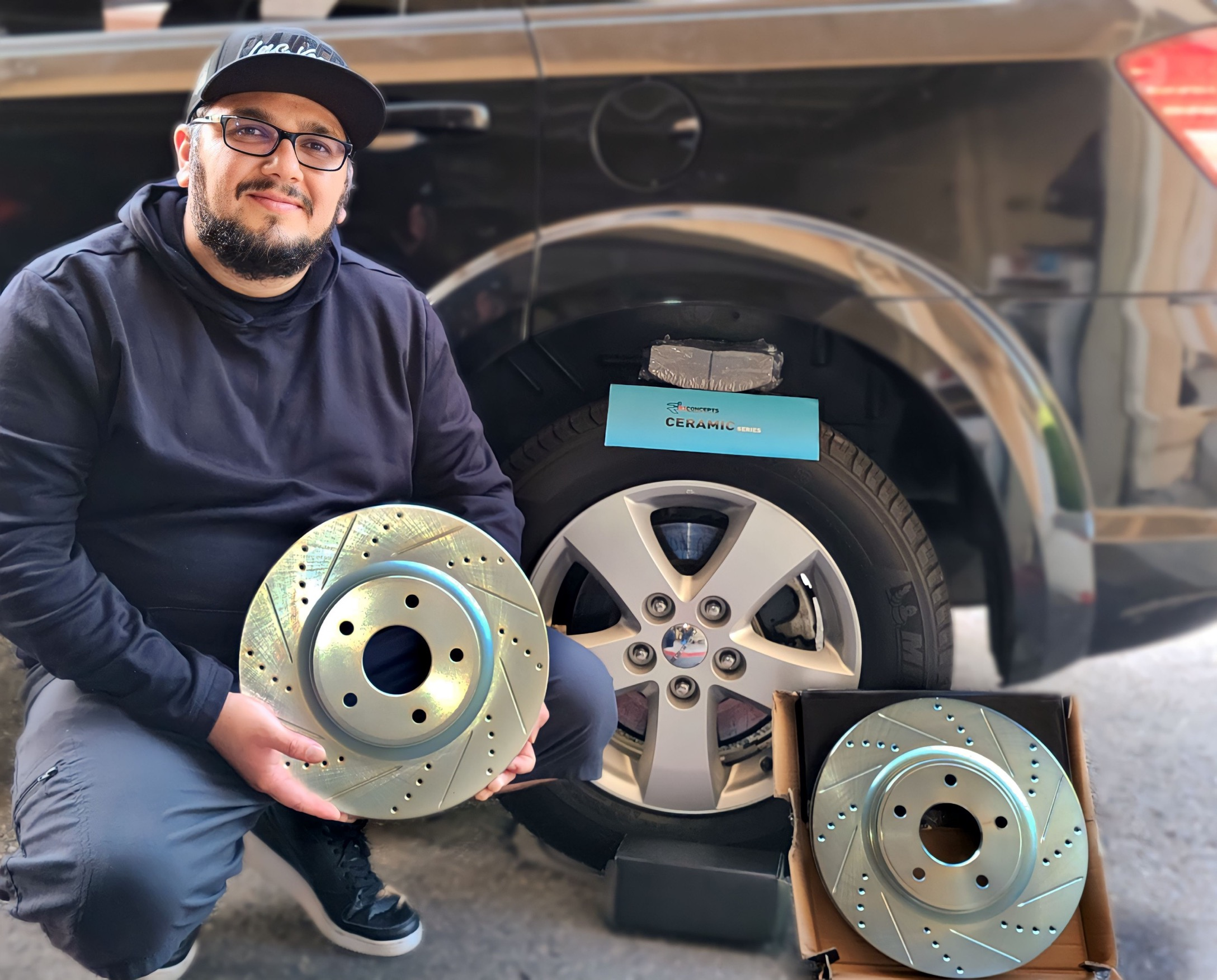
Drivers’ testimonials and experiences can provide valuable insights into the effectiveness and satisfaction of drilled and slotted rotors. Many drivers report improved braking performance and better heat dissipation when utilizing drilled and slotted rotors.
However, some mention that drilled rotors may not be suitable for race cars and are not necessary for daily driving. On the other hand, slotted rotors are suitable for both race cars and daily driving, offering improved braking performance and reduced brake fade.
Maintenance and Care Tips
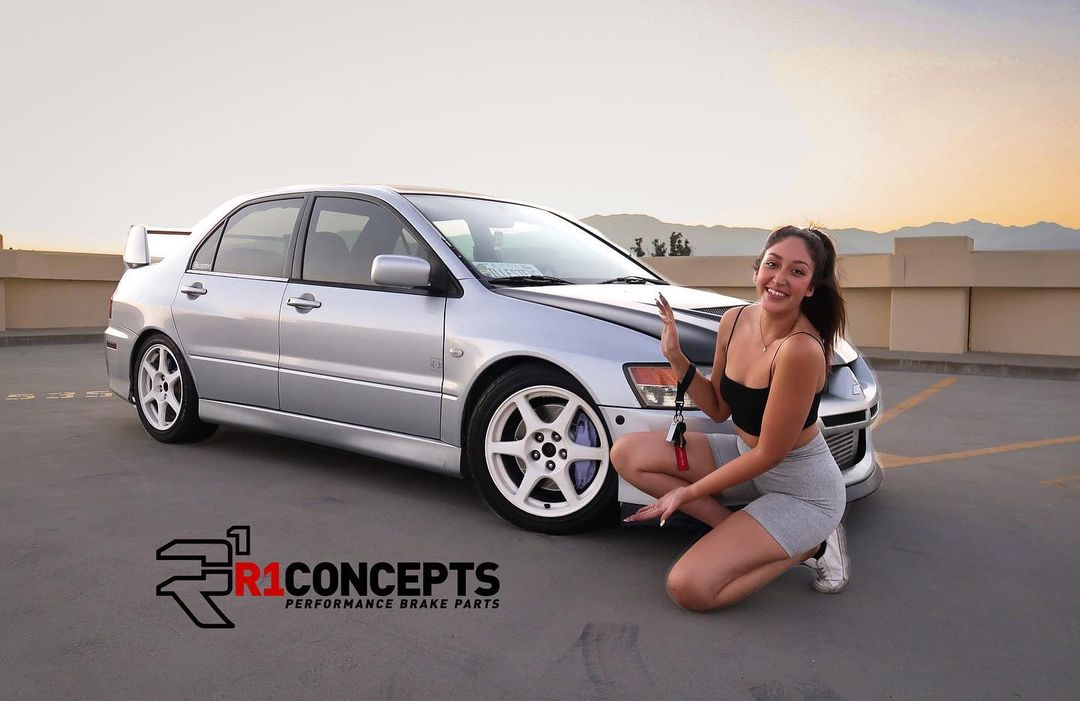
Maintaining and caring for your drilled and slotted rotors is essential to ensure optimal performance and longevity. Regular inspections, cleaning, and brake pad replacement can help keep your rotors in top condition and prevent any issues that may affect their performance.
Let’s explore some tips and advice on maintaining and caring for your drilled and slotted rotors.
Regular Inspection
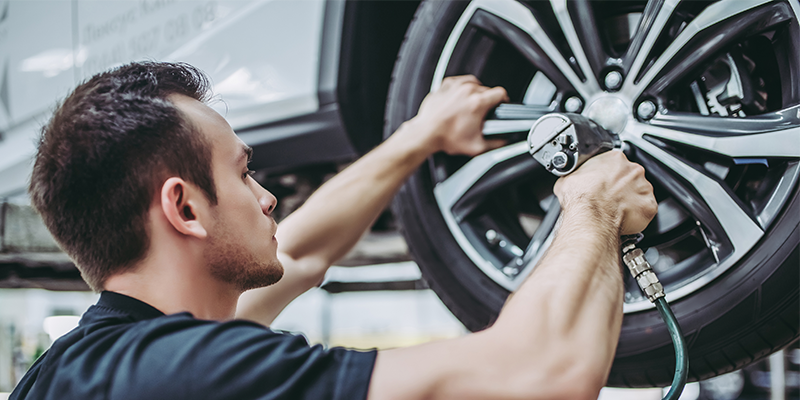
Regularly inspect your rotors for signs of wear, damage, or contamination to ensure they remain in optimal condition. It is recommended to inspect brake rotors at least annually or every 10,000 miles, or when brake pads are replaced.
If you notice any visible cracks, grooves, or other deformities in the rotor surface, an inspection should be conducted immediately.
Brake Pad Replacement
Replace brake pads as needed to maintain optimal braking performance and rotor lifespan. It is recommended that brake pads for drilled rotors be replaced between 30,000 and 70,000 miles, but always refer to the owner’s manual for the exact number.
Always follow the manufacturer’s instructions for replacing brake pads, as incorrect installation can lead to failure.
Cleaning and Decontamination
Clean and decontaminate your rotors to prevent the buildup of dust, debris, and contaminants that can affect their performance. For drilled rotors, use compressed air or brake cleaner to clean the rotor surface, and for slotted rotors, use a wire brush to remove debris and contaminants.
Regular cleaning and decontamination can help ensure the longevity and performance of your drilled and slotted rotors.
Summary
In conclusion, drilled and slotted rotors offer distinct advantages and can significantly enhance your vehicle’s braking performance. By understanding their design, benefits, ideal applications, and maintenance requirements, you can make an informed decision on the right rotor type for your vehicle. Ultimately, the choice between drilled and slotted rotors will depend on your vehicle’s specific needs, driving habits, and budget constraints. Stay safe and enjoy the journey with the confidence that comes from improved braking performance.
Frequently Asked Questions
Are drilled and slotted rotors better for daily driver?

Vented rotors are the best option for daily drivers, providing more heat dissipation and resilience than traditional solid rotors. Installing slotted or drilled rotors is unnecessary and would be overkill.
Do drilled and slotted rotors wear faster?
Drilled and slotted rotors wear faster than other types of brake rotors and may also shorten the life of brake pads.
What are the best rotors for daily driving?
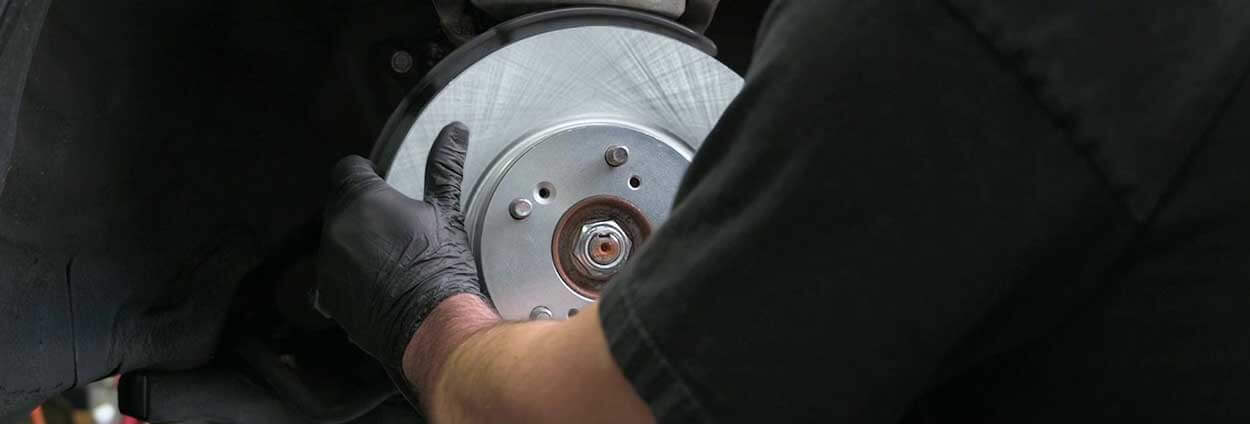
For daily street driving, R1 Concepts E-Line rotors provide reduced vibration and noise levels, making them an attractive and affordable choice.
What are the main differences between drilled and slotted rotors?
Drilled rotors feature holes drilled through their surface, while slotted rotors have slots machined into them. These two designs offer different advantages in terms of braking performance and heat dissipation.
How do I maintain and care for my drilled and slotted rotors?
To ensure the best performance and longevity of your drilled and slotted rotors, be sure to regularly inspect, clean, and replace brake pads.


